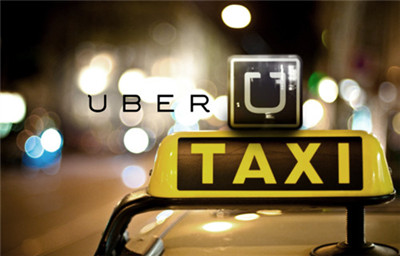(单词翻译:单击)
中英文本
Free exchange
自由交换
A fare shake
车费的变动
Jacking up prices may not be the only way to balance supply and demand for taxis
提高价格可能并不是满足出租车供需平衡的唯一方法
IT IS a familiar ritual for many: after a late night out you reach for your smartphone to hail an Uber home, only to find—disaster—that the fare will be three times the normal rate. Like many things beloved by economists, “surge pricing” of the sort that occasionally afflicts Uber-users is both efficient and deeply unpopular. From a consumer's perspective, surge pricing is annoying at best and downright offensive when applied during emergencies. Extreme fare surges often lead to outpourings of public criticism: when a snowstorm paralysed New York in 2013, celebrities, including Salman Rushdie, took to social media to rail against triple-digit fares for relatively short rides. Some city governments have banned the practice altogether: Delhi's did so in April.
对与很多人来说,深夜外出后拿出智能手机叫一辆优步的车回家似乎是一种常见的仪式了。然而打的费却比平时高出了三倍。像很多经济学家钟爱的定律一样,这种时不时困饶着优步用户的“动态定价策略”虽有效却极不受欢迎。从消费者的角度看,动态定价策略最多是恼人而已,但在紧急状况下采用该策略时却是极其讨厌的。急剧上涨的车费会引起公众的不满:2013年的暴风雨使得纽约整个城市瘫痪,包括萨尔曼·拉什迪在内的名人在社交媒体上斥责收取三位数短程车费的行为。一些市政府取缔了这种做法:德里(印度城市)在四月就这样做了。

Uber is sticking with surge pricing for now, but Jeff Schneider, one of its machine-learning experts, recently suggested that the company is interested in developing systems that rely on technology, rather than price, to allocate cars. Even if such a technological fix proves elusive, however, local governments do not need to regulate or ban surge pricing to reduce its sting.
Uber现在坚持使用动态定价策略,但是最近公司的机构研究专家之一杰夫·施耐德表示,该公司对开发依赖于技术而非价格来统筹车辆的系统很有兴趣。虽然这一技术目前难以实现,但是一旦实现,当地政府再也无需调控或者取缔动态价格机制以此削弱其影响。
Surge (or dynamic) pricing relies on frequent price adjustments to match supply and demand. Such systems are sometimes used to set motorway tolls (which rise and fall with demand in an effort to keep traffic flowing), or to adjust the price of energy in electricity markets. A lower-tech version is common after natural disasters, when shopkeepers raise the price of necessities like bottled water and batteries as supplies run low. People understandably detest such practices. It offends the sensibilities of non-economists that the same journey should cost different amounts from one day or hour to the next—and more, invariably, when the need is most desperate.
峰时(动态)定价依赖于频繁的价格调整以使供需平衡。这一机制有时会被用于设置高速公路通行费(为保证交通顺畅,通行费因需求而上涨、下调),或者用于调整电力市场上能源价格。自然灾害之后,因为供给不足,店主提高生活必需品(如瓶装水和电池等)的价格这种低技术含量的版本屡见不鲜。可以理解,人们厌恶这种做法。这样的机制伤害了非经济学家的感情,每天或者每小时相同路程的花费却不同,而且当需求最紧急时也是一成不变。
Yet surge fares also demonstrate the elegance with which prices moderate a marketplace. When demand in an area spikes and the waiting time for a car rises, surge pricing kicks in; users requesting cars are informed that the fare will be a multiple of the normal rate. As the multiple rises, the market goes to work. Higher fares ration available cars by willingness to pay: to richer users, in some cases, but also to those less able to wait out the surge period or with fewer good alternatives. Charging extra to those without good alternatives sounds like gouging, yet without surge pricing such riders would be less likely to get a ride at all, since there would be no incentive for all the other people requesting cars to drop out.
但是峰时价格也显示出它带来的好处,价格策略缓和了市场。当需求在某个地区急剧上涨,以及等待时长增加,动态定价策略就发挥作用了;需要用车的客户会被告知费用是平时的几倍。当多个因素同时出现时,市场开始起作用。高费用会将车辆分配给那些愿意支付的客户即那些更有钱的客户;但是在某些情况下,对那些无法在高峰期等待或是没有好选择的用户也是同样适用的。对那些没有好选择的用户采取额外收费听起来像是乱要价,但是没有动态价格策略这些用户不太可能搭得到车,因为对于其他有需求坐车的人来说没有任何理由不坐车。至少在局部地区动态价格策略增加了供给。
译文属译生译世
重点讲解
1.talk about 讨论,谈论
例句:I had a long talk about this with my best friend.
我和我最好的朋友就此事进行了长谈。
2.spend on 把…花在…
例句:How much time did you spend on this?
你做这事用了多少时间?
3.go into 进入
例句:It was a private conversation and I don't want to go into details about what was said.
那是私人之间的谈话,我不想透露其中的细节。
4.according to 根据
例句:Philip stayed at the hotel, according to Mr Hemming.
据亨明先生所说,菲利普住在旅馆里。


